|
There are possibly very few industries – if any at all – that can operate without an ERP system, and one of the most successful of such systems is definitely SAP. This is probably also due to the versatility of SAP, being that there are SAP-apps for almost any industry business. It is therefore quite natural to see a solution like HCL Workload Automation (HWA), that makes of the versatility and openness one of its strengths, integrating exceptionally well with SAP. Register for the Widen your SAP landscape with HCL Workload Automation webinar to learn more now! It is actually since long time that HWA offers native SAP integration points, but this is not the only topic we want to cover here. This article is intended also to explain, in the clearest and most straightforward possible way, the reasons why HWA-SAP integration is so beneficial for any modern and competitive industry. We want then to provide objective arguments (avoiding being too specific in order to cover any possible industry use case) to answer the following questions: Why should you be concerned about integrating SAP and HWA What for you may want to integrate your SAP with HWA How do HWA and SAP work together Frankly speaking, if you are evaluating the convenience of adopting HWA in your organization, you are probably interested in the central question “WHAT FOR”, and you may jump directly to that section. Nevertheless, also the other points have their meaning business-wise: “WHY” (the next section) provides the foundations that sustain the “WHAT FOR”, and “HOW” (the last section) provides additional support to reassure that the adoption of HWA is a seamless process. Why to integrate SAP and HWA We previously mentioned that SAP has an application for almost any industry business. This idea can be challenged by saying that real life is more complex than any theory, and no SW architecture will solve all your problems alone, because any business has peculiarities that require customizations of SAP and also integrations with other systems (both commercial and in-house development). So, very often you need to run your ICT business by a concatenation of steps that are performed on separate and heterogeneous applications, systems, and platforms… some of which will be SAP, but many others will not. Put it in other words: few business flows rely 100% on SAP. Why is it so? We can resume the causes in few categories:
Moreover, even within those few of workflows that are completely performed with SAP applications, you may want to have some logic in the concatenation of the steps, or to plan the execution on a more complex run-cycle basis than a mere “alarm clock”. To give a couple of easy examples (we could have provided more complex ones, I promise):
The image below provides graphical and conceptual examples: 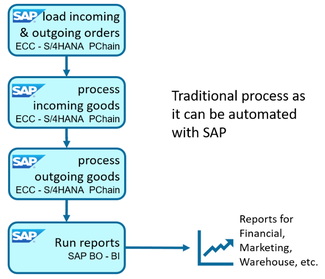 Let’s give a more exhaustive example, this time we will describe a specific flow: Inventory Management. This first diagram shows the typical flow: you want to process the orders, update the inventory and produce different kind of reports for your top management. This simple waterfall scheduling works fine as long as you have a small volume of data to process, enough time to do it, and enough people working to monitor and correct errors. Also, this flow assumes that you only need SAP applications to fulfill your business needs. In other words, there are no dependencies from other ICT jobs to complete the workflow. Or, if there are any, these are managed manually by IT personnel, which in turn would mean that the whole process is not really automated. Let’s try then to enhance the flow. Let’s assume you want to be sure that every step is successful, so that it is automatically re-run in case of failure. In this case you need an external orchestrator, and this is when HWA comes into play. You may need the inventory management workflow to execute on a clever run-cycle basis, or to be triggered by an event (for example, when the new file with the incoming orders list is available). Not enough, chances are that the volume of data to process is so high that you need to parallelize as many actions as possible, to complete within the established deadlines. In other words, you want to respect your external and internal SLAs. Now you definitely need a great orchestrator like HCL Workload Automation, so that your workflow can be something like the following: Let’s go beyond. Your business probably needs non-SAP jobs be part of the flow, between an SAP job and another. And of course, it would be great if the overall end-to-end ICT process was automated and centrally monitored. With HCL Workload Automation you can orchestrate hybrid platforms/systems/applications in a single jobstream from a centralized point of control, and you can shape your Inventory Management as follows: This was a simple and straightforward example of what you can do with HWA and SAP together, but you can apply the same concept to define your own real case, thanks to HWA scalable and robust architecture that also allows you to distribute dynamically the workload on your target nodes. HWA and SAP – WHAT FOR In the previous section we provided arguments and examples of what capabilities are added by HWA to your SAP operations, and what use cases are enabled by that integration. Use cases, though, need to be translated and explained in terms of business cases, that is in term of concrete business needs and economic advantages, and this is what we will clarify in this section. The main drivers to adopt HWA as the orchestrator of your SAP and non-SAP activities can be resumed in the following categories:
We have seen that HCL Workload Automation allows you to orchestrate SAP and non-SAP processes from a centralized point of control. The following picture shows some scenarios that could not easily implemented by the native SAP features alone. Actualy HWA enables all the above scenarios, and brings the following business benefits: How do HWA and SAP work together Integration points From a functional point of view, the integration between HWA and SAP can be resumed by the following picture: SAP applications that can be integrated in HWA are:
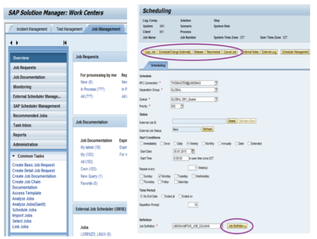 Solution Manager integration This aspects deserves attention due to the fact that many IT operators are used to Solution Manager and sometimes reluctant to leave its user interface. HWA-SAP integration allows to take advantage of many HWA capabilities directly from Solution Manager. You can schedule jobs inside the Workload Automation database. Possibility to schedule SAP and non-SAP jobs. Scenarios:
SAP BO Integration Directly query for BO reports on the BO server. Access through remote Business Object APIs, through SAP libraries on the HWA agent. HWA for SAP main modules The integration covers the whole lifecycle of a workflow: Jobs editing and linking Jobs can as usual be defined in SAP, and they will be visible from HWA Dynamic Workload Console (DWC), where you can combine them together with any other non-SAP job to create sophisticated flows (job-stream in HWA terminology). What is visible in HWA is an HWA-job that is linked to the SAP-job in SAP. This correlation allows you monitor the status of those jobs from HWA dashboard. In addition, you can create a new SAP-job directly from HWA, meaning that you create an HWA-job and the corresponding SAP-job will be created and linked appropriately. The method of creating jobs directly from HWA allows also temporary jobs, this is useful for a one-time activity when you do not want unnecessary proliferation of templates in SAP. Launching and tracking HWA run-cycle capabilities are more sophisticated and flexible than native SAP scheduling. Hence you will be able to schedule your SAP activities with the flexibility of HWA calendar. Moreover, HWA jobstreams can be triggered by external events, including therefore jobstreams that contain SAP jobs. This is also true the other way around: SAP events can be watched by HWA to trigger jobstreams execution. Other relevant features are:
- Kill of running SAP jobs and associated child
- Restart process chains from failure point
- Prepare jobs on Server Groups SAP monitoring HWA centralized dashboard provides a single point of control of your scheduled and running activities. This allows you to have a holistic view of your business workflow composed by a sophisticated sequence of SAP and non-SAP jobs. Other relevant features are:
- IDOC traffic - CCMS events - Other SAP-related events (ITM)
Performance and Governance HWA integration allows you to monitor SAP-specific KPIs to anticipate performance degradation, by throttling appropriately the volume of jobs submitted simultaneously (this is achieved by dynamically adjusting jobs priorities). Moreover, the what-if analysis tool of HWA allows you to predict the impact of any planned change in a workflow, allowing you to calibrate the execution to keep SLA compliance.
- Enforce policies to users
- Keep the optimal working point - Important job preemption
- Recreate automatically variants
0 Comments
Your comment will be posted after it is approved.
Leave a Reply. |
Archives
July 2024
Categories
All
|



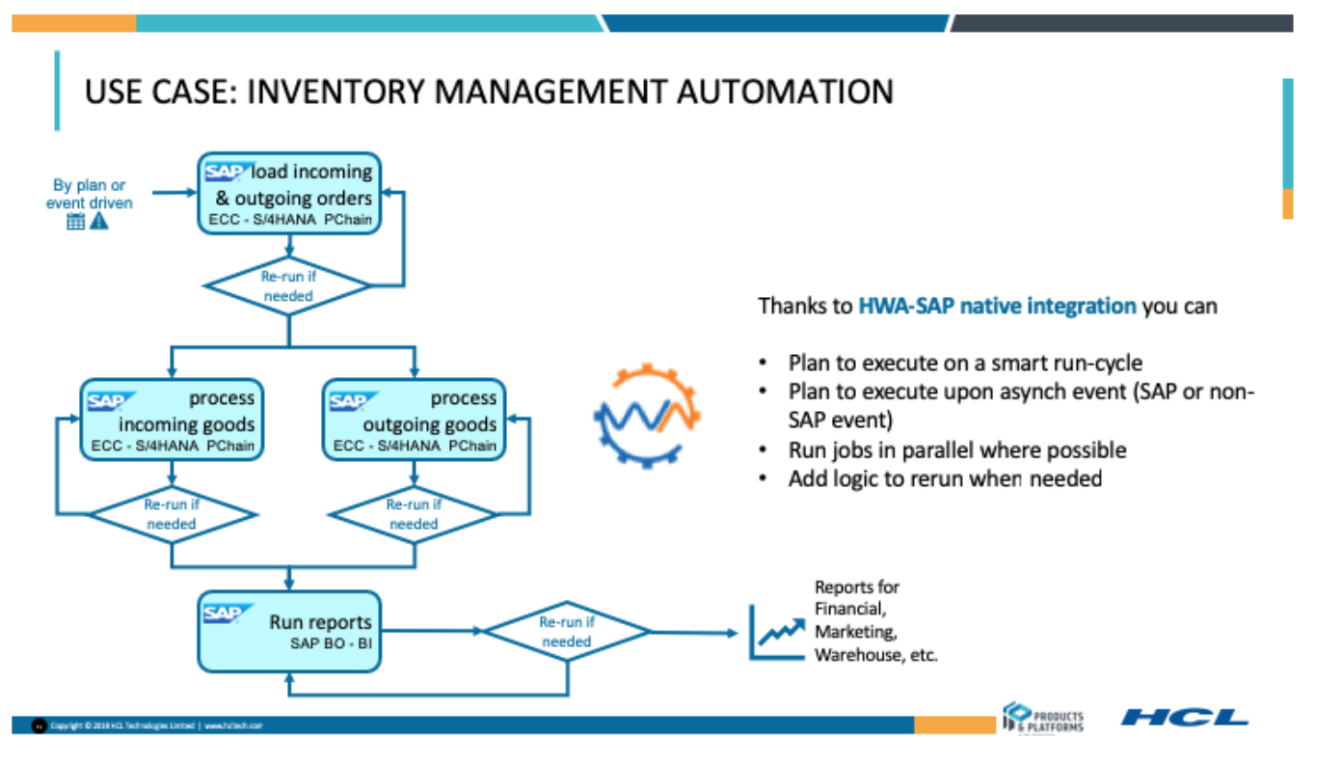


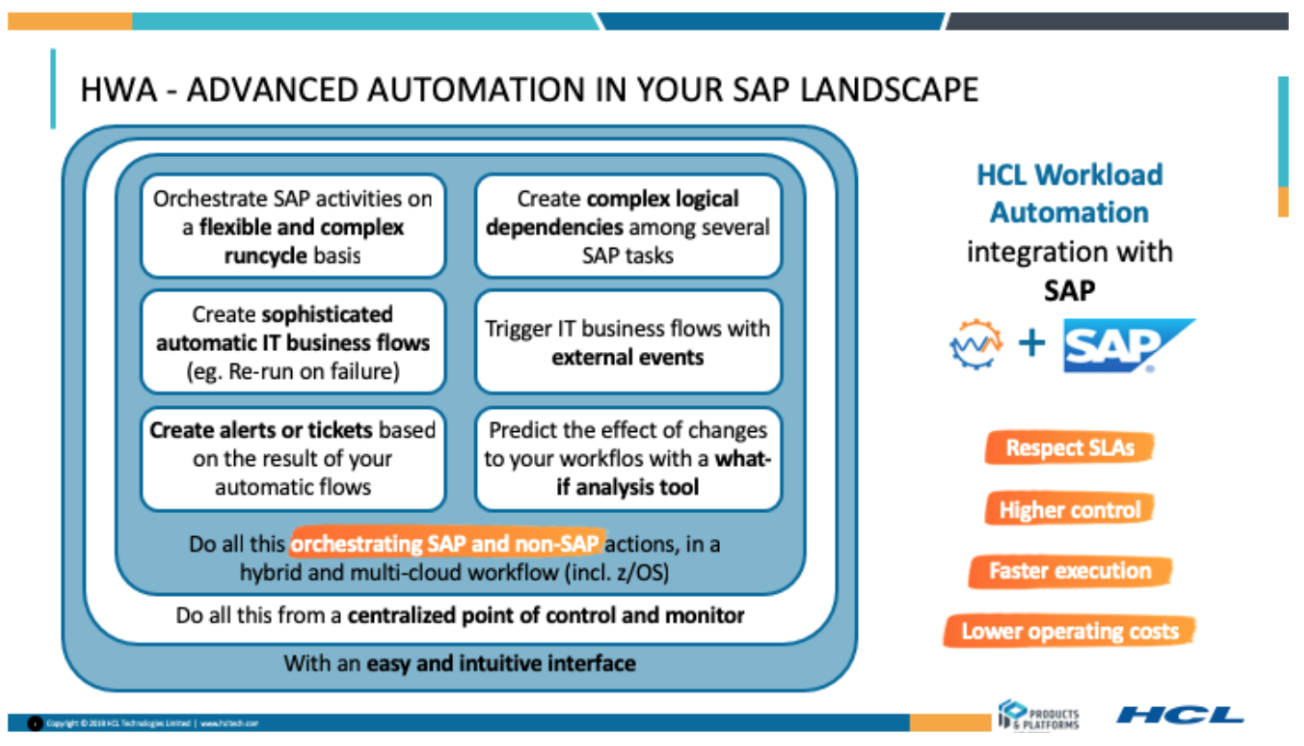
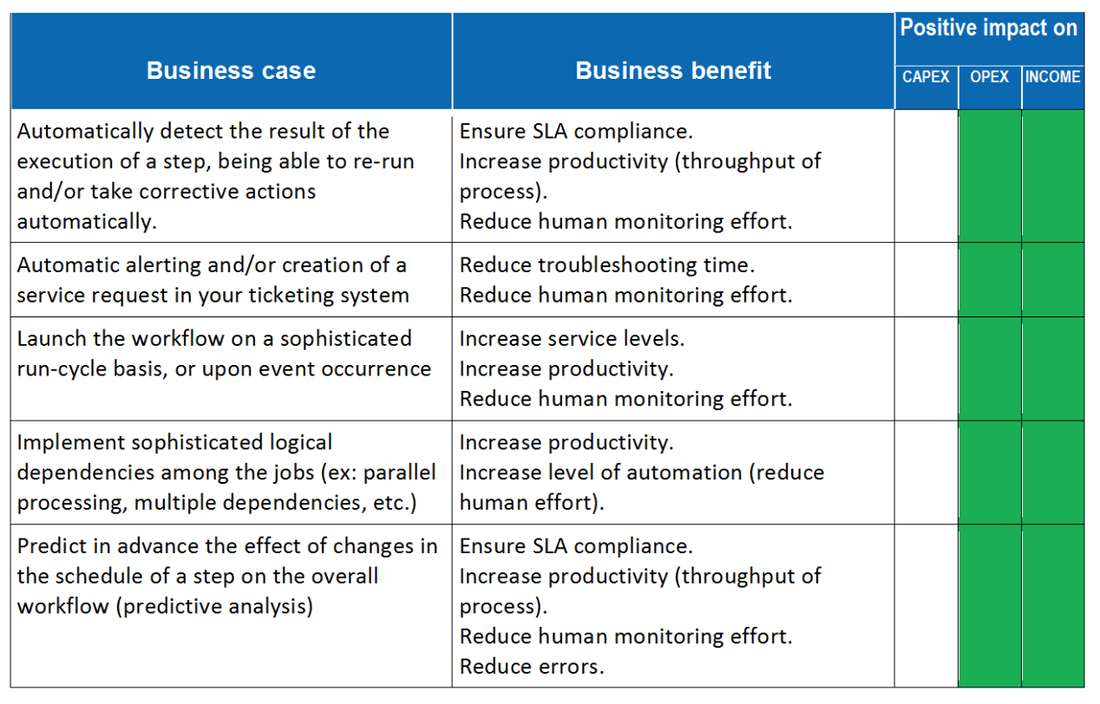
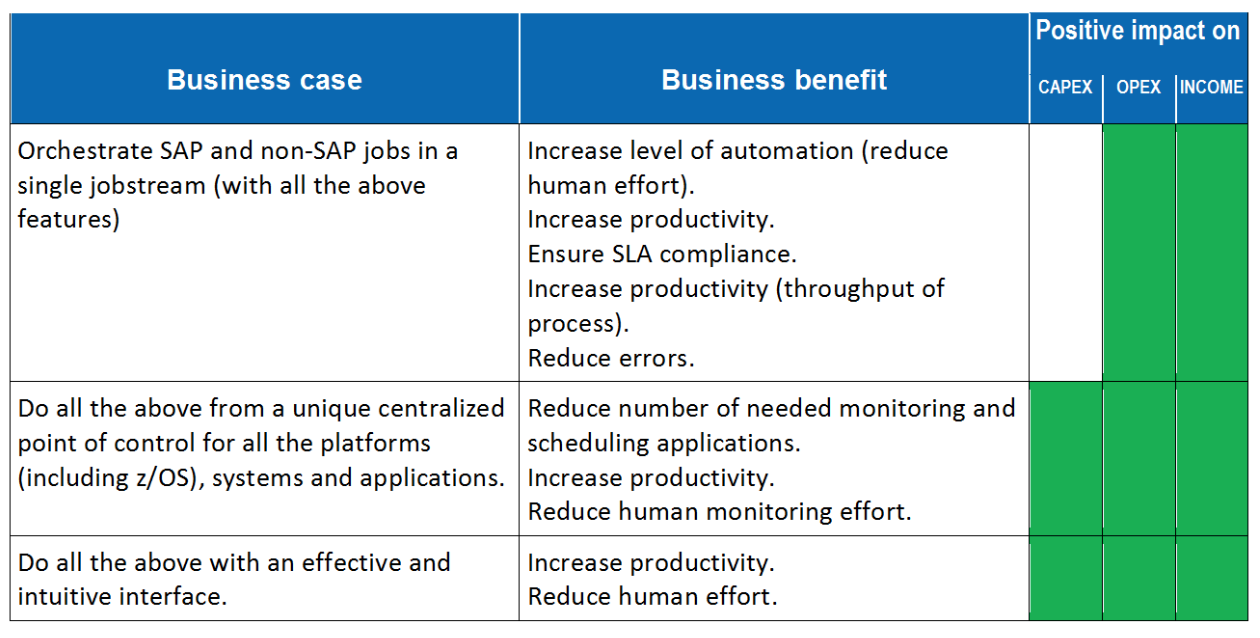
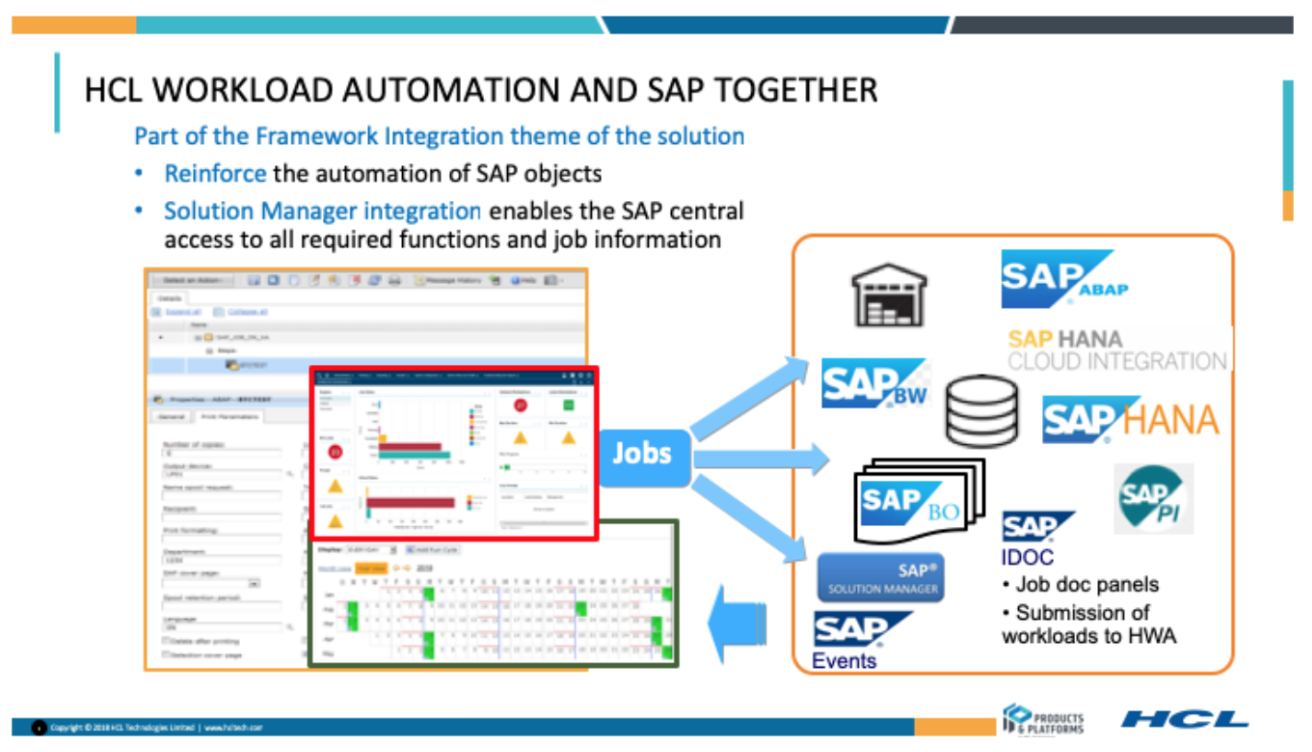
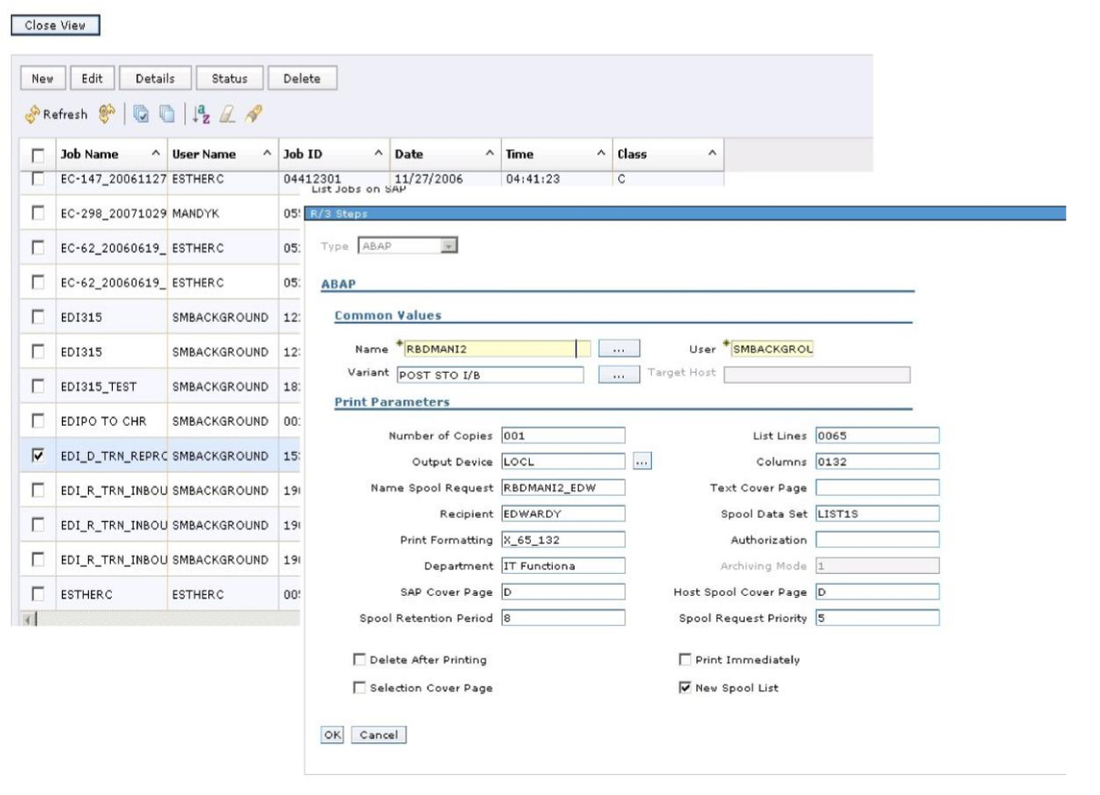

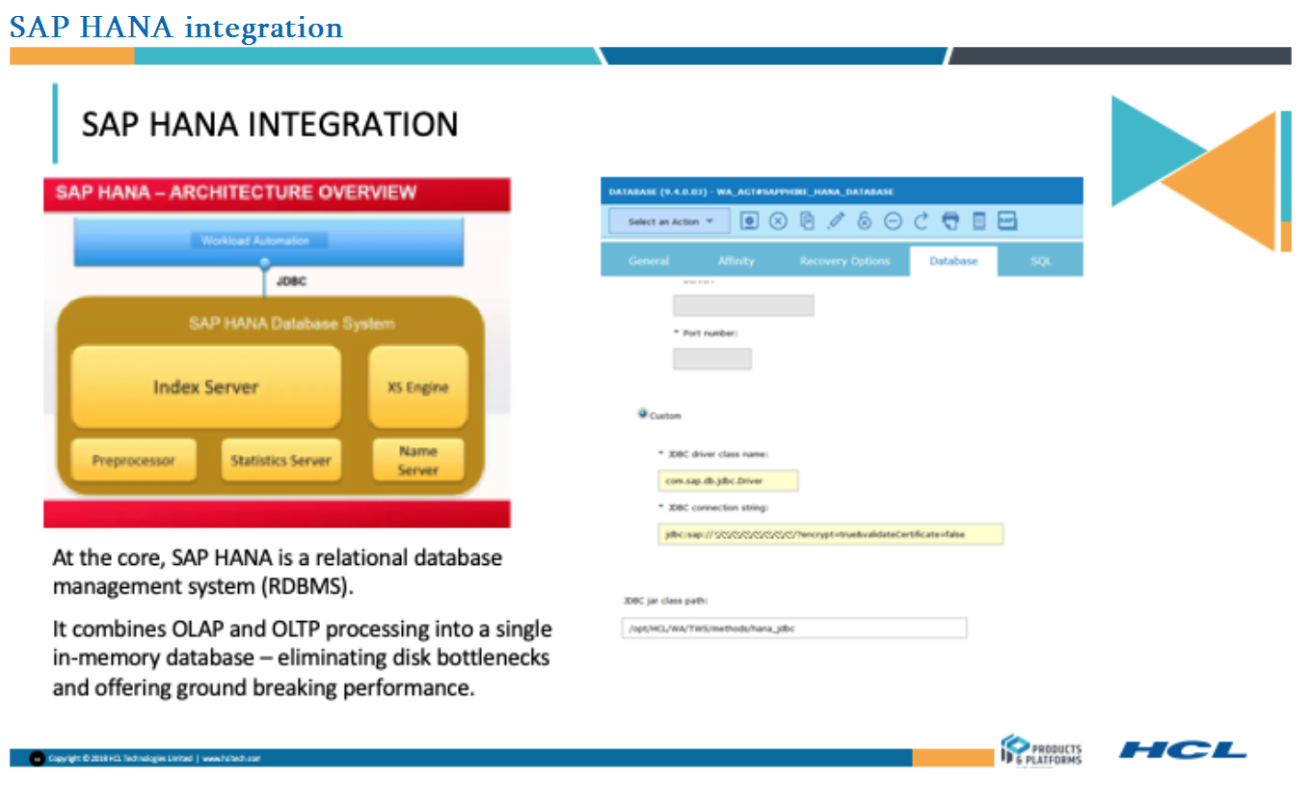


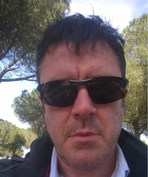
 RSS Feed
RSS Feed